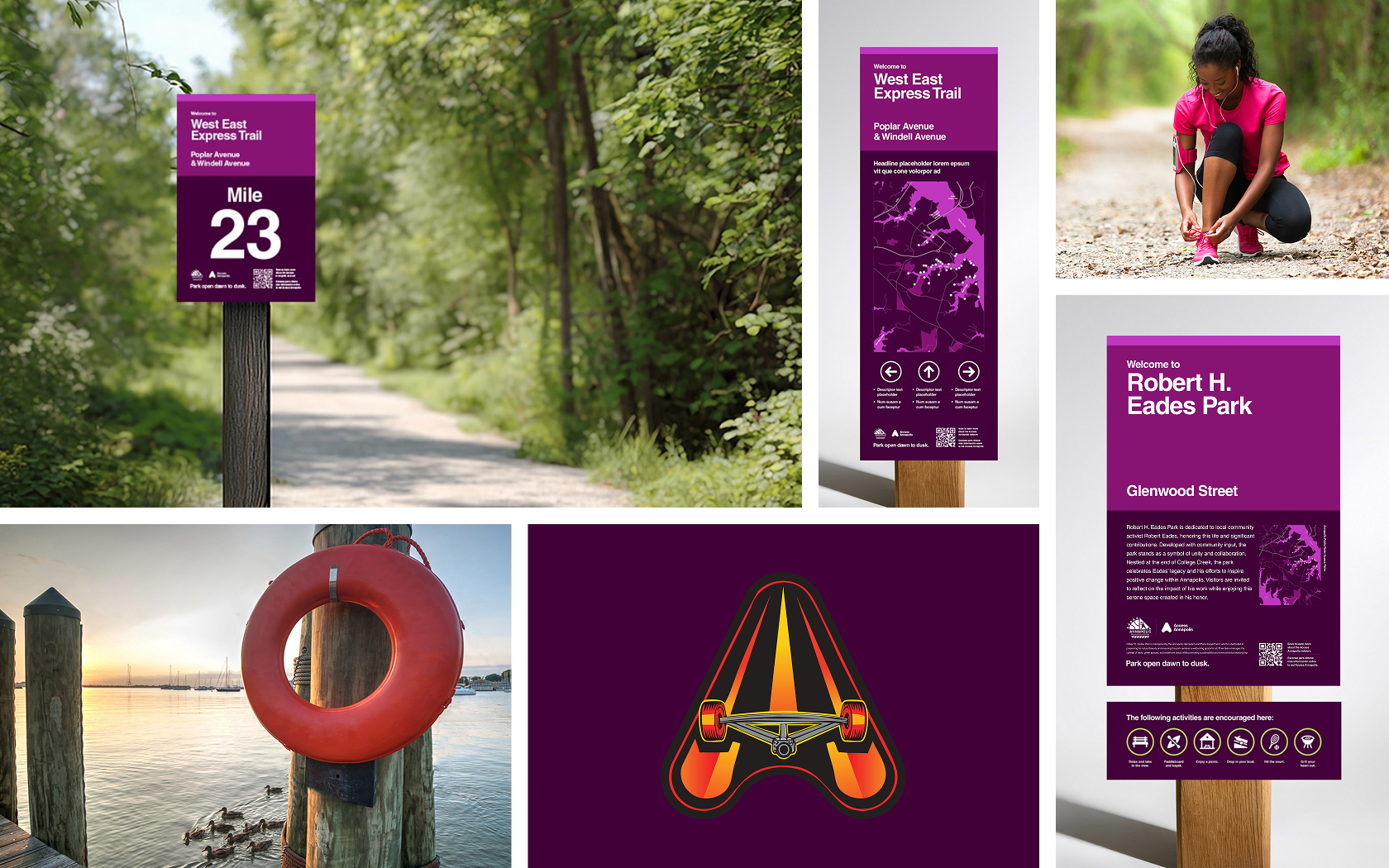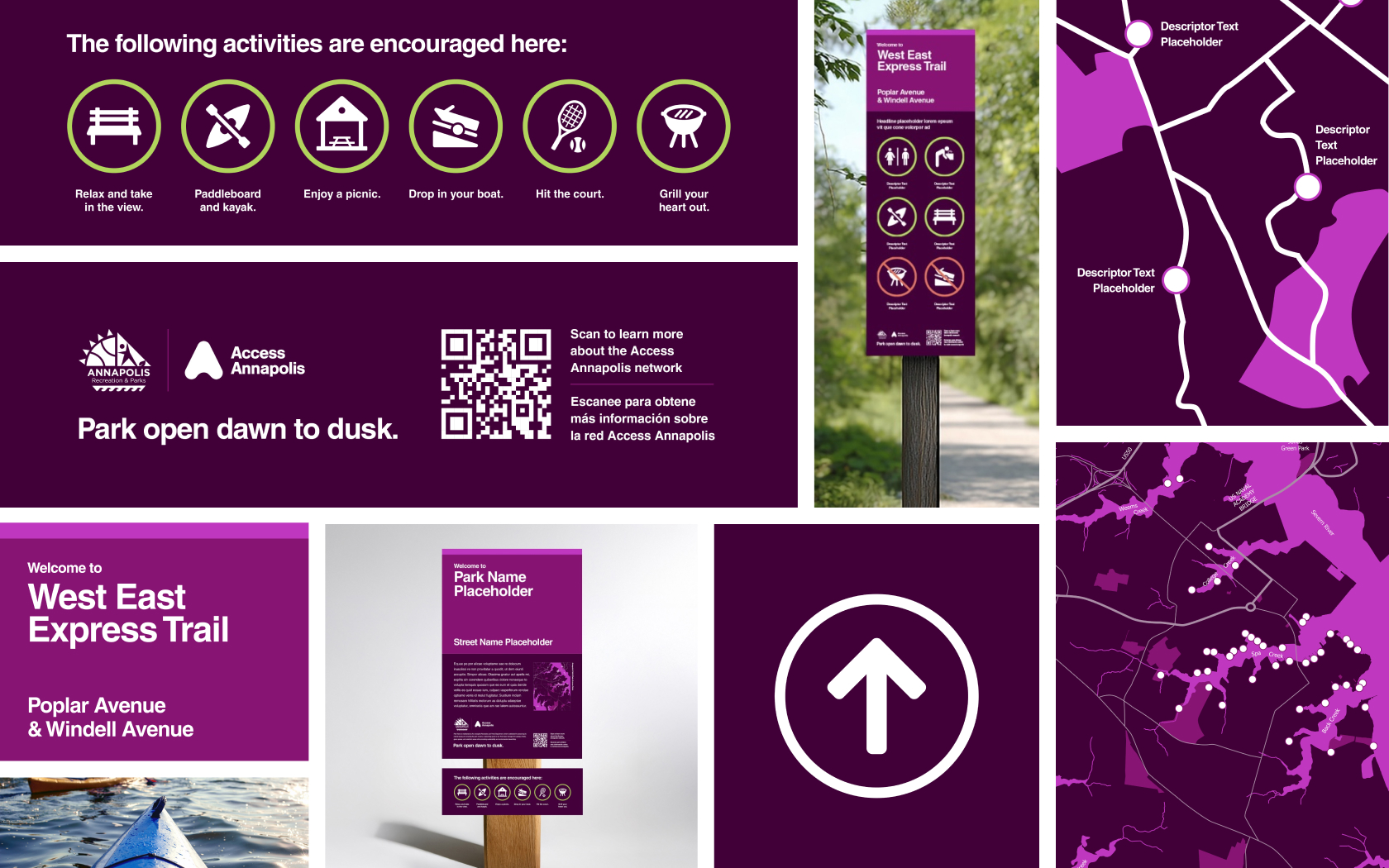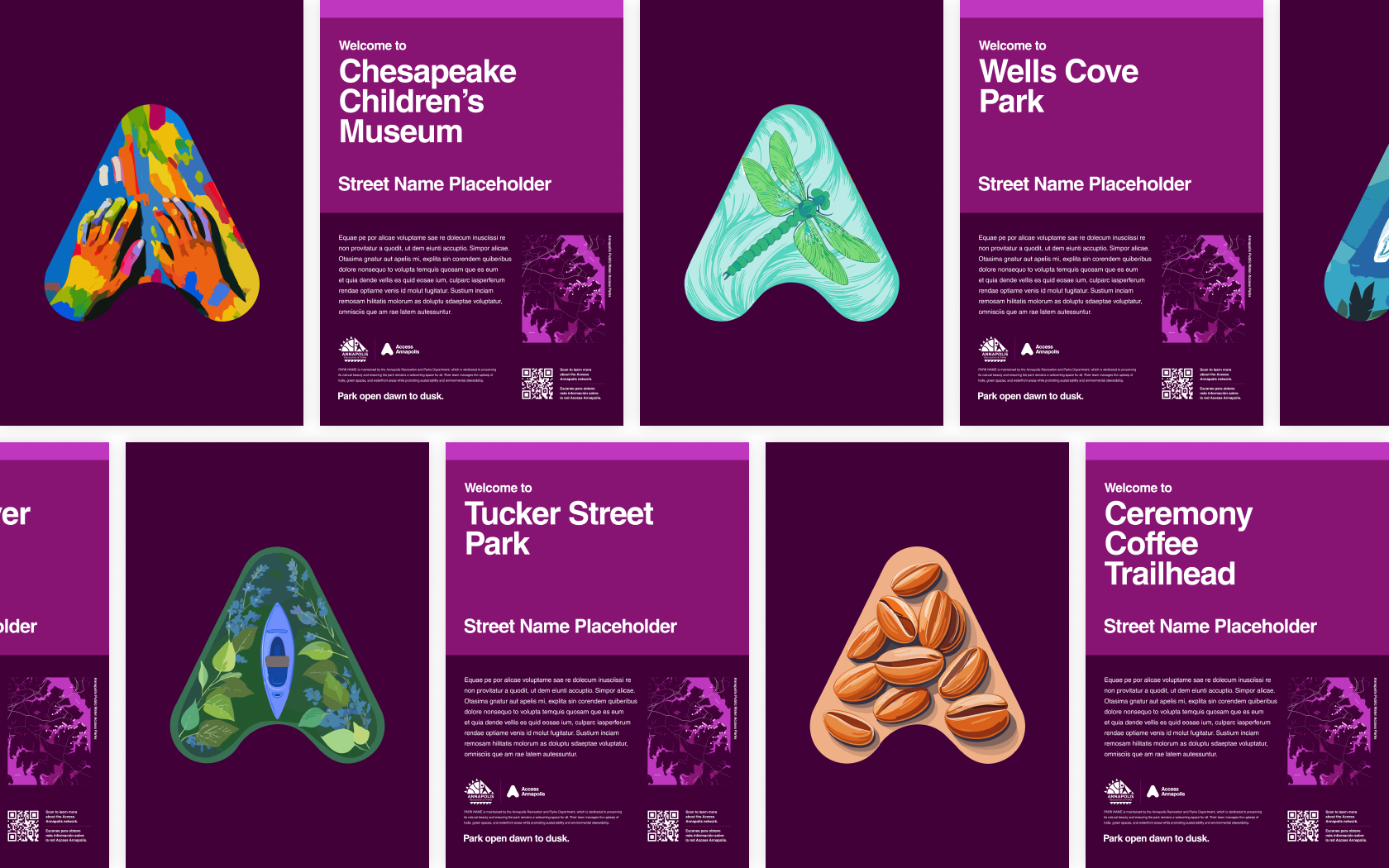A welcoming new look for Annapolis.
The City of Annapolis faced a significant challenge in addressing inconsistent, outdated, and inadequate signage across its many trails and public water access locations. As part of its first-ever citywide Public Water Access Plan, the City sought to create a cohesive signage system to enhance community engagement, promote responsible use, and align with existing branding. With diverse site conditions and spatial constraints, Annapolis needed a versatile solution that could adapt to varying needs while maintaining consistency. We worked together to develop the foundation of a stunning new signage system designed to welcome both locals and tourists alike to all this wonderful city has to offer.












